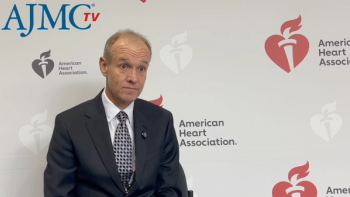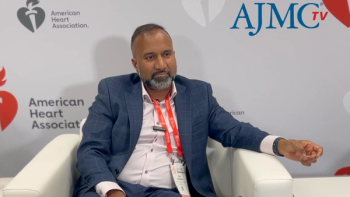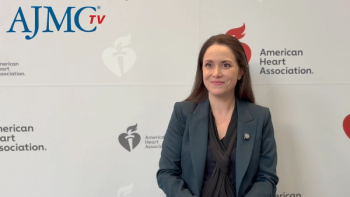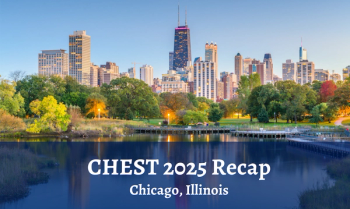
Payer and health system leaders convened in Pittsburgh, Pennsylvania, on September 9, 2025, to discuss the interconnected health conditions of cardiovascular-kidney-metabolic (CKM) syndrome.

Laura is the vice president of content for The American Journal of Managed Care® (AJMC®) and all its brands, including Population Health, Equity & Outcomes; Evidence-Based Oncology™; and The Center for Biosimilars®. She has been working on AJMC since 2014 and has been with AJMC’s parent company, MJH Life Sciences®, since 2011.
She has an MA in business and economic reporting from New York University. You can connect with Laura on LinkedIn or Twitter.

Payer and health system leaders convened in Pittsburgh, Pennsylvania, on September 9, 2025, to discuss the interconnected health conditions of cardiovascular-kidney-metabolic (CKM) syndrome.

Pretransplant NPM1 MRD testing significantly predicts relapse risk in acute myeloid leukemia.

Research challenges age cut-offs in AML treatment, advocating for flexible, individualized approaches based on continuous age assessment.

There is an urgent need for equitable care and access to cardiovascular care, said Vallerie McLaughlin, MD; Martha Gulati, MD; and Stephen Nicholls, MBBS, PhD.

The FDA approved ziftomenib for relapsed acute myeloid leukemia with NPM1 mutations, offering hope for high-risk patients.

Tirzepatide's dual mechanism targets GIP and GLP-1, so it provides strong cardiovascular benefits, said Stephen Nicholls, MBBS, PhD, MBA.

New findings reveal sotagliflozin's benefits for patients with heart failure with preserved ejection fraction without diabetes, said Juan Badimon, PhD.

Integrating nephrology and cardiology care for patients with kidney and cardiovascular (CV) risks can be challenging but is possible, said Roy Mathew, MD.

Prioritizing education and shared decision-making can help patients with newly diagnosed heart failure feel less overwhelmed, said Martha Gulati, MD.

Sotatercept can enhance treatment for pulmonary arterial hypertension, even in patients already on conventional therapies, said Vallerie McLaughlin, MD.

The oral PCSK9 inhibitor enlicitide can change cholesterol management with high efficacy and improved adherence, said Ann Marie Navar, MD, PhD.

Experts discuss the evolving landscape of CLL treatment, cellular therapies, and innovative diagnostics shaping patient care and cost-effectiveness in oncology.

Guideline adherence in treating acute lymphoblastic leukemia (ALL) enhances health care resource utilization, especially for adolescent and young adult patients.

Experts at CHEST 2025 highlight rising costs, insurance complexity, and workforce shortages as major barriers to health care access in the US.

Vaccine awareness, safety, and addressing misinformation are all important to improve adherence and public health outcomes, said Kristina Crothers, MD.

The FDA approved revumenib for relapsed/refractory (R/R) acute myeloid leukemia, offering a new targeted therapy option for patients with NPM1 mutations.

Elinzanetant offers a promising alternative to hormone therapy for women seeking relief from menopause symptoms, said JoAnn V. Pinkerton, MD.

A novel combination therapy enhances the effectiveness of proteasome inhibitors against acute myeloid leukemia (AML), improving survival rates in preclinical models.

Dedicated COPD respiratory therapists can improve inhaler use, ensure adherence, and bridge care transitions, explained Megan Dulohery Scrodin, MD.

Assessing all available nonhormonal and hormonal therapies for vasomotor symptoms helps empower women to make informed decisions, said Lee Shulman, MD.

Digitized behavioral cough suppression therapy is a safe, highly effective, and accessible alternative to drugs for chronic cough, said Laurie Slovarp, PhD.

CT scans can play a role not just in diagnosing but also in monitoring non–cystic fibrosis bronchiectasis management, explained James D. Chalmers, MD.

Inhaled corticosteroids pose long-term risks in COPD management, prompting careful screening and potential de-escalation strategies, said Sara Assaf, MD.

Counseling patients with obstructive sleep apnea on using GLP-1s effectively prior to starting treatment can help ensure adherence, said Matthew Biszewski, PharmD.

Cemiplimab has been approved as the first immunotherapy for high-risk cutaneous squamous cell carcinoma (CSCC), significantly improving disease-free survival rates.

Amivantamab plus lazertinib enhances survival in NSCLC but requires complex care compared with osimertinib, explained Danny Nguyen, MD, of City of Hope.

The Trump administration advances the Most Favored Nation order by partnering with Pfizer, which came to the table voluntarily and has been granted a reprieve from upcoming drug tariffs.

The evolving treatment landscape for unfit patients with newly diagnosed acute myeloid leukemia (AML) centers on venetoclax combination and personalized strategies.

Patients with acute myeloid leukemia (AML) in remission for over 3 years experience survival rates comparable with a matched cohort from the general population.

The combination of amivantamab and lazertinib in first-line non–small cell lung cancer (NSCLC) significantly reduces resistance mechanisms with implications for second-line treatment, said Danny Nguyen, MD, of City of Hope.

Published: April 20th 2021 | Updated:

Published: October 3rd 2022 | Updated:

Published: October 16th 2022 | Updated:

Published: January 3rd 2025 | Updated:

Published: December 2nd 2025 | Updated:

Published: August 10th 2025 | Updated:

259 Prospect Plains Rd, Bldg H
Cranbury, NJ 08512
© 2025 MJH Life Sciences®
All rights reserved.
